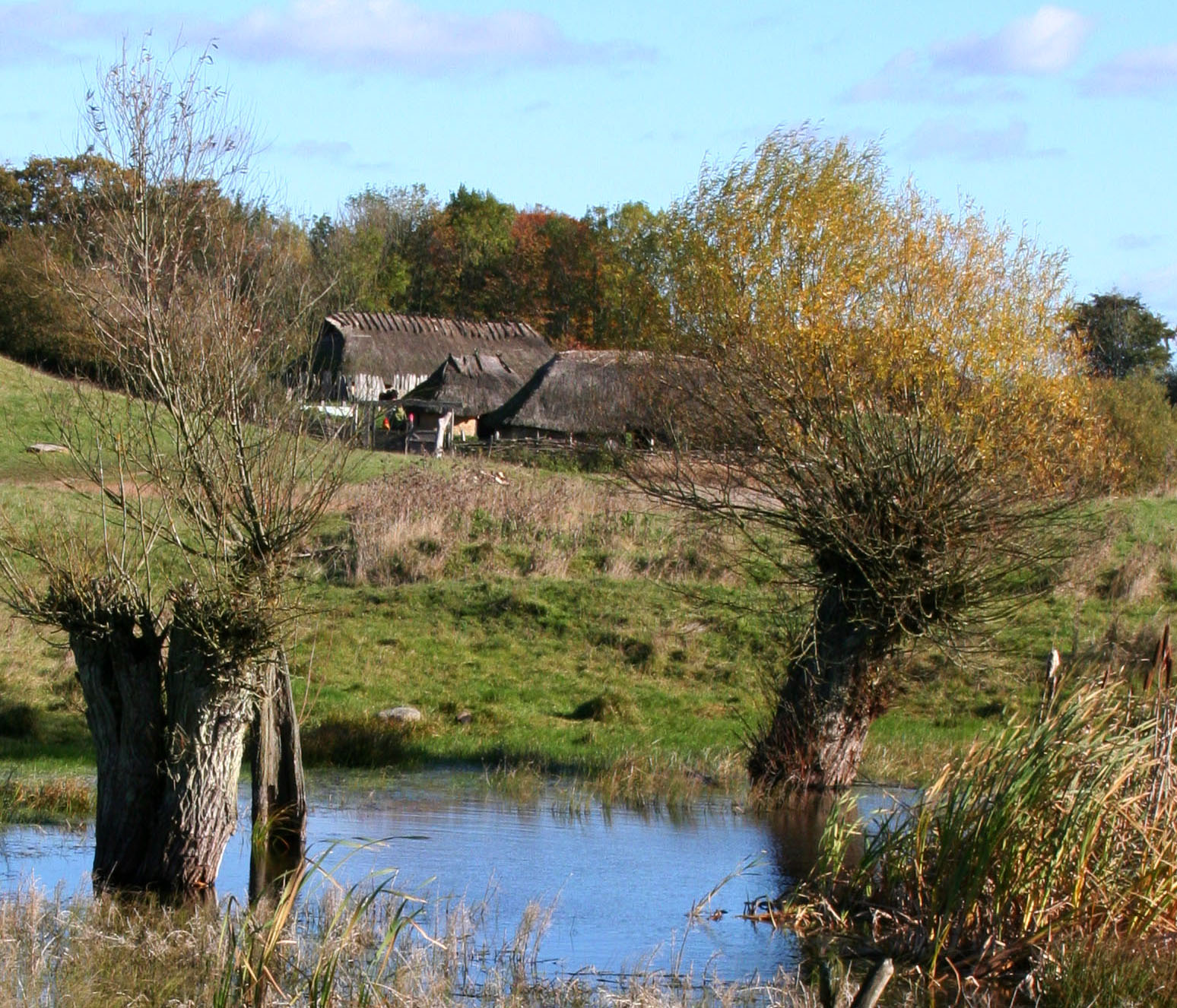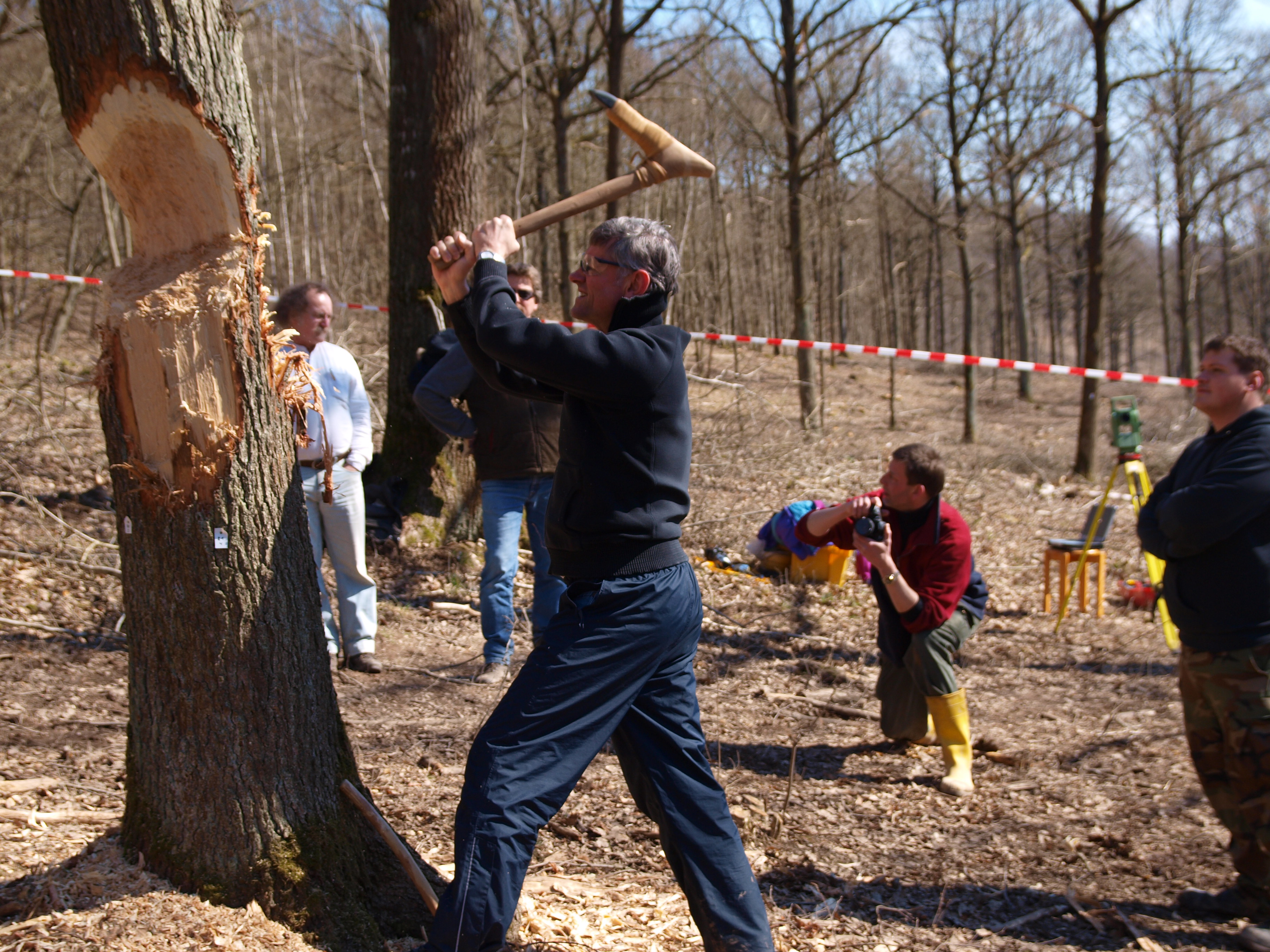|
Land Of Legends (Sagnlandet Lejre)
Land of Legends, ''Centre for Historical-Archaeological Research and Communication'' (Danish: ''Sagnlandet Lejre'') is a 106-acre (43 hectare) archaeological open-air museum situated in the Lejre Municipality, few kilometres west of Roskilde, Denmark. History Lejre Land of Legends was formerly known as Centre for Historical-Archaeological Research and Communication (''Historisk-arkæologisk Forsøgscenter''). It was founded in 1964 by ethnologist Hans-Ole Hansen to create new knowledge of the past through experiments. On March 1, 2009, Lejre Experiment Centre changed its name to Sagnlandet Lejre. The site comprises reconstructions of an Iron Age village and sacrificial bog (200 BC to 200 AD), a Viking market place (900 AD), a Stone Age campsite (5000 BC), an 18th-century farmstead and various grave monuments. The historical artisan workshops (pottery, weaver's workshop, smithy) work to reproduce pre-historical handicraft. Gardens, pastures and fields are the natural scenario ... [...More Info...] [...Related Items...] OR: [Wikipedia] [Google] [Baidu] |
Errett Callahan
Errett Callahan (December 17, 1937 – May 29, 2019) was an American archaeologist, flintknapper, and pioneer in the fields of experimental archaeology and lithic replication studies. Early life Errett Callahan was born in Lynchburg, Virginia on December 17, 1937. Callahan’s interest in the outdoors and Native American lifeways began quite early on. As a boy Callahan was a member of the Boy Scouts of America and it was as a Boy Scout that he was first exposed to the skills and techniques that the Native Americans used to survive in the outdoors.Callahan, Errett: Personal Communication, September 25, 2007 His father, who was also his Scoutmaster, played a large role in this, not only imparting his technical knowledge, but also instilling a sense of self-reliance and independence that would shape Errett’s outlook his entire life. Callahan attended Hampden-Sydney College in Hampden-Sydney, Virginia from 1956 to 1960. While at Hampden-Sydney Callahan majored in French to ... [...More Info...] [...Related Items...] OR: [Wikipedia] [Google] [Baidu] |
Living Museums
An open-air museum (or open air museum) is a museum that exhibits collections of buildings and artifacts out-of-doors. It is also frequently known as a museum of buildings or a folk museum. Definition Open air is “the unconfined atmosphere…outside buildings...” In the loosest sense, an open-air museum is any institution that includes one or more buildings in its collections, including farm museums, historic house museums, and archaeological open-air museums. Mostly, 'open-air museum is applied to a museum that specializes in the collection and re-erection of multiple old buildings at large outdoor sites, usually in settings of recreated landscapes of the past, and often include living history. They may, therefore, be described as building museums. European open-air museums tended to be sited originally in regions where wooden architecture prevailed, as wooden structures may be translocated without substantial loss of authenticity. Common to all open-air museums, including ... [...More Info...] [...Related Items...] OR: [Wikipedia] [Google] [Baidu] |
Archaeological Museums In Denmark
Archaeology or archeology is the scientific study of human activity through the recovery and analysis of material culture. The archaeological record consists of artifacts, architecture, biofacts or ecofacts, sites, and cultural landscapes. Archaeology can be considered both a social science and a branch of the humanities. It is usually considered an independent academic discipline, but may also be classified as part of anthropology (in North America – the four-field approach), history or geography. Archaeologists study human prehistory and history, from the development of the first stone tools at Lomekwi in East Africa 3.3 million years ago up until recent decades. Archaeology is distinct from palaeontology, which is the study of fossil remains. Archaeology is particularly important for learning about prehistoric societies, for which, by definition, there are no written records. Prehistory includes over 99% of the human past, from the Paleolithic until the adve ... [...More Info...] [...Related Items...] OR: [Wikipedia] [Google] [Baidu] |
Museums In Region Zealand
A museum ( ; plural museums or, rarely, musea) is a building or institution that cares for and displays a collection of artifacts and other objects of artistic, cultural, historical, or scientific importance. Many public museums make these items available for public viewing through exhibits that may be permanent or temporary. The largest museums are located in major cities throughout the world, while thousands of local museums exist in smaller cities, towns, and rural areas. Museums have varying aims, ranging from the conservation and documentation of their collection, serving researchers and specialists, to catering to the general public. The goal of serving researchers is not only scientific, but intended to serve the general public. There are many types of museums, including art museums, natural history museums, science museums, war museums, and children's museums. According to the International Council of Museums (ICOM), there are more than 55,000 museums in 202 count ... [...More Info...] [...Related Items...] OR: [Wikipedia] [Google] [Baidu] |
Open-air Museums In Denmark
Open air, open-air or openair may refer to: *''Open Air'', a BBC television program *Open-air cinema or outdoor cinema *Open-air concert, a concert taking place outside *Open-air museum, a distinct type of museum exhibiting its collections out-of-doors * Open-air preaching, the act of publicly proclaiming a religious message *Open-air treatment, therapeutic exposure to fresh air and sunshine *Open air school, an outdoor school designed to combat the spread of disease *OpenAIR, a message routing and communication protocol for artificial intelligence systems *Openair Cinemas, an Australasian brand of outdoor cinema events, owned by Pedestrian (company) See also *''Open Air Suit'', a studio album by Air *Open Air PM, a defunct daily newspaper in New York City *OpenAIRE The Framework Programmes for Research and Technological Development, also called Framework Programmes or abbreviated FP1 to FP9, are funding programmes created by the European Union/European Commission to support and ... [...More Info...] [...Related Items...] OR: [Wikipedia] [Google] [Baidu] |
Education In Denmark
Education in Denmark is compulsory ( da, undervisningspligt) for children below the age of 15 or 16, even though it is not compulsory to attend ''Folkeskole'' ("public school"). The school years up to the age of fifteen/sixteen are known as ''Folkeskole'', since any education has to match the level offered there. About 82% of young people take further education in addition to this. Government-funded education is usually free of charge and open to all. Denmark has a tradition of private schools and about 15.6% of all children at basic school level attend private schools, which are supported by a voucher system. The Education Index, published with the UN's Human Development Index in 2008, based on data from 2013, lists Denmark as 0.873, amongst the highest in the world, beneath Australia, Finland and New Zealand. Literacy in Denmark is approximately 99% for both men and women. History The Danish education system has its origin in the cathedral- and monastery schools established b ... [...More Info...] [...Related Items...] OR: [Wikipedia] [Google] [Baidu] |
1964 Establishments In Denmark
Events January * January 1 – The Federation of Rhodesia and Nyasaland is dissolved. * January 5 - In the first meeting between leaders of the Roman Catholic and Orthodox churches since the fifteenth century, Pope Paul VI and Patriarch Athenagoras I of Constantinople meet in Jerusalem. * January 6 – A British firm, the Leyland Motor Corp., announces the sale of 450 buses to the Cuban government, challenging the United States blockade of Cuba. * January 9 – ''Martyrs' Day (Panama), Martyrs' Day'': Armed clashes between United States troops and Panamanian civilians in the Panama Canal Zone precipitate a major international crisis, resulting in the deaths of 21 Panamanians and 4 U.S. soldiers. * January 11 – United States Surgeon General Luther Terry reports that smoking may be hazardous to one's health (the first such statement from the U.S. government). * January 12 ** Zanzibar Revolution: The predominantly Arab government of Zanzibar is overthrown by African nat ... [...More Info...] [...Related Items...] OR: [Wikipedia] [Google] [Baidu] |
Middelaldercentret
Middelaldercentret () is an experimental living history archaeological open-air museum in Denmark, which depicts the middle ages in the Denmark of the late 14th and early 15th centuries. It is located in Sundby Lolland, some 4 km northwest of the centre of Nykøbing Falster on the waterfront of Guldborgsund. It features a town built as part of a typical Danish market town with craftsmen, a harbour with ships and boats, and a market place. The employees are dressed in period costumes and live and work in the houses and do everyday activities such as craftmanship, cooking and weapon training. Furthermore, the museum has a variety of siege weapons of the period, such as trebuchets, a ballista and a cannon and smaller weapons such as handguns, longbows and crossbows. All of the items are built on site using period tools. Activities include live firing of the weapons daily, archery, knightly tournaments, and demonstrations of crafts and tasks from the late 14th century and ear ... [...More Info...] [...Related Items...] OR: [Wikipedia] [Google] [Baidu] |
Flintknappers
Knapping is the shaping of flint, chert, obsidian, or other conchoidal fracturing stone through the process of lithic reduction to manufacture stone tools, strikers for flintlock firearms, or to produce flat-faced stones for building or facing walls, and flushwork decoration. The original Germanic term ''knopp'' meant to strike, shape, or work, so it could theoretically have referred equally well to making statues or dice. Modern usage is more specific, referring almost exclusively to the hand-tool pressure-flaking process pictured. It is distinguished from the more general verb "chip" (to break up into small pieces, or unintentionally break off a piece of something) and is different from "carve" (removing only part of a face), and "cleave" (breaking along a natural plane). Method Flintknapping or knapping is done in a variety of ways depending on the purpose of the final product. For stone tools and flintlock strikers, chert is worked using a fabricator such as a hammersto ... [...More Info...] [...Related Items...] OR: [Wikipedia] [Google] [Baidu] |
Experimental Archaeology
Experimental archaeology (also called experiment archaeology) is a field of study which attempts to generate and test archaeological hypotheses, usually by replicating or approximating the feasibility of ancient cultures performing various tasks or feats. It employs a number of methods, techniques, analyses, and approaches, based upon archaeological source material such as ancient structures or artifacts. It is distinct from uses of primitive technology without any concern for archaeological or historical study. Living history and historical reenactment, which are generally undertaken as hobbies, are non-archaeological counterparts of this academic discipline. One of the main forms of experimental archaeology is the creation of copies of historical structures using only historically accurate technologies. This is sometimes known as reconstruction archaeology or reconstructional archaeology; however, reconstruction implies an exact replica of the past, when it is in fact just on ... [...More Info...] [...Related Items...] OR: [Wikipedia] [Google] [Baidu] |
Land Of Legends Lejre 05
Land, also known as dry land, ground, or earth, is the solid terrestrial surface of the planet Earth that is not submerged by the ocean or other bodies of water. It makes up 29% of Earth's surface and includes the continents and various islands. Earth's land surface is almost entirely covered by regolith, a layer of rock, soil, and minerals that forms the outer part of the crust. Land plays important roles in Earth's climate system and is involved in the carbon cycle, nitrogen cycle, and water cycle. One-third of land is covered in trees, 15% is used for crops, and 10% is covered in permanent snow and glaciers. Land terrain varies greatly and consists of mountains, deserts, plains, plateaus, glaciers, and other landforms. In physical geology, the land is divided into two major categories: mountain ranges and relatively flat interiors called cratons. Both are formed over millions of years through plate tectonics. A major part of Earth's water cycle, streams shape the landscape ... [...More Info...] [...Related Items...] OR: [Wikipedia] [Google] [Baidu] |


.jpg)


.jpg)

